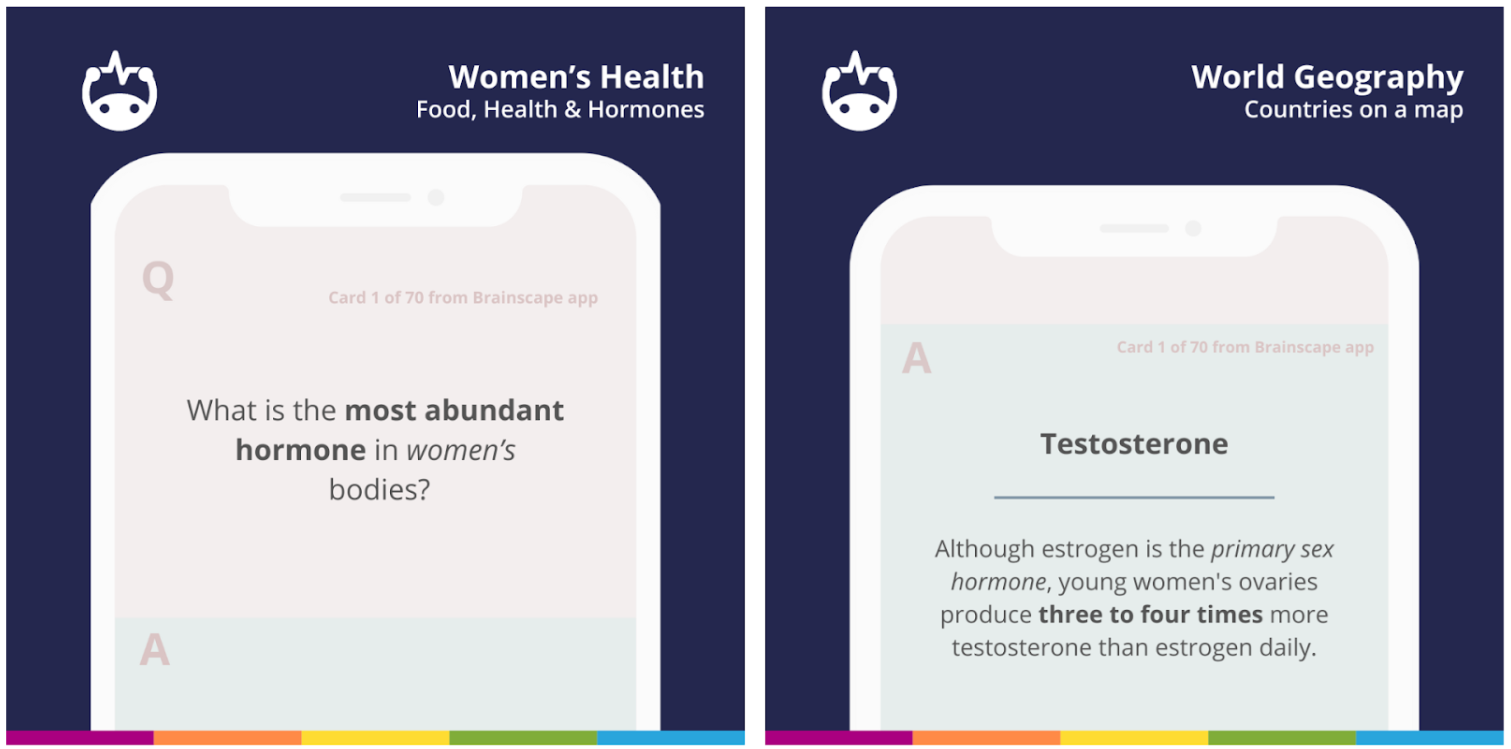The cognitive science literature is clear: flashcards (particularly digital flashcards) are proven to help you learn much faster than traditional, passive learning techniques. But making effective flashcards isn’t just about slapping together questions and answers… there’s a real art and science to it!
As purveyors of the world’s finest online flashcards, the team here at Brainscape—an adaptive spaced repetition study app—has learned a thing or seven about how to make flashcards that help you learn as fast and painlessly as humanly possible!
And so, to empower you to do the same, we wrote up these criteria into the following checklist. Follow these guidelines and you’ll be able to make online flashcards that engage, educate, and endure!
How to make flashcards that work: a checklist
1.Syntax: write in well-formed sentences
Great flashcards start with impeccable syntax, which means writing out clear, well-formed sentences that are easy to understand. Nothing trips up comprehension quite like bad grammar, spelling, and punctuation errors!

It might take you a few seconds more to write in clear, error-free language but you’ll easily save that time later on when you (or your learners) don’t get tripped up on what the flashcard is asking and the concept the answer side is attempting to convey.
By the way, if you’re interested in using Brainscape as your flashcard creation platform, check out this quick video on how to get started…
2. Clarity: be specific & frame concepts to stand on their own
Every flashcard should be immediately understandable on its own and not rely on the logic/content presented in a previous flashcard, especially in a shuffled study deck. Avoid vague wording, and use action-oriented phrasing that tells you or your learners exactly what’s expected. A clear flashcard makes every second of studying count.
3. Structure: format for organization & readability
Brainscape’s online flashcards work best when they’re properly formatted. You can write the answers as bulleted lists or use bold and italics to highlight key points or words. For further explanation or context, use the footnote of the flashcard so that you keep your questions and answers short and sweet.
All of this not only organizes the information but also enhances its readability. Remember, always to keep the anatomy of a flashcard simple: one question, one answer. Clutter-free cards lead to clutter-free minds!
4. Media: add images & audio

A picture is worth a thousand words, and the same goes for your flashcards. Whenever possible, incorporate images, audio clips, or links to external resources. For example, diagrams can simplify complex concepts, and pronunciation clips can enrich language learning. (Brainscape supports both.) Media adds to the depth of the learning experience and keeps learners engaged.
5. Snappiness: keep flashcard questions & answers concise
The best flashcards are quick and snappy. They prompt concise answers that keep the learning momentum alive. Long-winded questions or overly detailed answers can slow down a study session, making it harder to sustain focus.
A great flashcard demands just enough thought to stimulate recall, without dragging it out. If you want to add further information, clarification, or context, write a footnote beneath the main question or answer. (Brainscape’s flashcards have fillable fields for both.)
6. Accuracy: fact-check & keep up-to-date
This probably goes without saying but the content of every flashcard must be absolutely correct. Learners trust their educators/tools to deliver reliable knowledge, so double-check facts, figures, and references. Also, update your flashcards when necessary to ensure that they reflect the latest research, standards, or exam formats. Accuracy builds trust (with your learners)—and better results (for you)!
7. Relevancy: align closely with the curriculum
Finally, effective flashcards align with your or your learners’ goals and needs. Tailor your content to match the exam requirements. Keep the level of difficulty appropriate to where you or your learners are approaching the subject from, while incrementally introducing concepts that build toward mastery. Present material as evergreen, with a clear explanation of its importance, so that you always know why it matters.
A checklist for making effective online flashcards
- Have I written clear and salient questions and answers?
- Have I been specific in describing each concept and can it logically stand on its own?
- Have I formatted (bullet points, bold, italics) the text for ease of readability?
- Have I added audio and imagery, where appropriate?
- Have I kept my questions and answers concise and to the point?
- Are my flashcards 100% accurate and up-to-date? (Have I checked recently?)
- Have I created flashcards that are closely aligned with the curriculum?
By following this checklist—which we like to call the “Brainscape Method”—you will be able to craft flashcard collections that are a powerful study tool. Each of these seven principles plays a critical role in making every flashcard engaging, efficient, and effective!
